FutuRaM involves 28 partners (associations, companies, universities) and over 100 experts from different scientific and technical fields covering six waste streams: batteries, electrical and electronic equipment, vehicles, mining; slags and ashes, and construction and demolition. Our researchers often engage in passionate conversations across their fields and most importantly about the relevance of this project. Their enthusiasm is fascinating so without further ado, meet the researchers behind FutuRaM!
Please introduce yourself both personally and professionally in a few sentences. We’d like to know a bit more about your day-to-day job, where do you live, what did you study.
I am geologist engineer with experience in groundwater monitoring, natural risks and natural resources besides geology. I completed my master’s degree at Universitat Politècnica de Catalunya in Barcelona, Spain before moving onto a second master’s course in Nancy (Geology School), France. Right after my graduation in 2008, I started working for BRGM, the French geological survey which is based in Orléans, France.
In the first 10 years, I mainly covered natural risk assessments evaluating the potential impacts of earthquakes, storm surges or tsunamis while slowly moving towards raw materials and circular economy topics. In 2018 I took up my current position in the Raw Materials & Waste unit where I am working on topics such as the material needs for energy transition, and activities with French authorities (Ministry of Environment) such as the national program for coastal landfill rehabilitation and life cycle assessment applied to mineral wastes recycling.
While I travelled quite a bit in the past, particularly to complete field work in the West Indies, my current job keeps me at the office most of the time. There’s a great atmosphere at BRGM and as a rather social person, I enjoy coffee break discussions with my colleagues and interactions throughout the day. Incidentally, many research questions were solved over coffee!
How did you end up working in this field, particularly on EU funded projects?
I was working on seismic risk assessments, so dealt with a large amount of data and information regarding buildings (census data, maps, etc.). One day in 2011, the colleagues of my current unit contacted to me asking for help to estimate the material stock of Orléans city. From then on, the subject piqued my interest, and I discovered a new aspect of my field.
Later, in 2019, Daniel Cassard, a colleague who is expert in mineral resources at BRGM and served as a main contact person for previous EU funded projects such as ProSUM, started planning his retirement. That’s when I came into the picture, as he was looking for someone to help him with a new project: FutuRaM. The rest is history.
How would you explain your favourite research project (even if unrelated to FutuRaM) to somebody outside the scientific community? Why did it capture your attention?
My favourite research project must be ASURET, where we estimated the weight of Orléans. It was BRGM’s first reference of building material stock, and the results are still referenced to this day.
Another interesting research project worth mentioning was carried out with my geochemist colleagues at BRGM. They were looking for Spanish speakers to order and obtain lithium samples for batteries. It may have started with a simple translation but with time, we started collaborating more and more to the extent that I am now the project coordinator of MaDiTraCE. MaDiTraCe is an EU funded project that aims to reinforce the transparency, traceability, and sustainability of complex supply chains of critical raw materials including cobalt, lithium, natural graphite and rare earth elements.
Thank you, Anne-Marie Desaulty for bringing me into the exciting world of the origin tracing of minerals!
How would you capture the essence of BRGM and how does your expertise and research relate to FutuRaM?
BRGM‘s activities are quite particular compared to many other geological surveys as we do not limit our focus solely to primary resources. In 1974, Claude Guillemin, president of BRGM, appeared in a video while leisurely smoking a pipe and describing why it is important to recycle, wisely predicting the issues we are facing today. With the end of mining activity in France and in Europe 20-30 years ago, BRGM started focussing more on topics related to circular economy and environment. Nonetheless, we have never stopped relying on and developing our experience and expertise in mining and primary raw materials.
I believe this decision gave BRGM its strength and continues to do so as we understand both the basic materials sector, and the recycling industry which is an asset for FutuRaM as well.
What do you find the most intriguing about this project and why? What do you hope to achieve with FutuRaM?
First, a multi-country project is always exciting because it is the best way to learn and share experiences. The subject is also a trending topic. We must therefore advance in the scientific field, develop methods, make data available, and at the same time support European public policy on the recycling industry and the supply of raw materials.
How would you simplify and explain the goal of FutuRaM to a passerby who has never heard of EU funded projects and CRMs?
The products that we are consuming today will become waste one day. These products are also the resources of tomorrow, but the circular economy loop is not yet perfect. We want to measure with good quality data how recycling can contribute to the European material needs.
